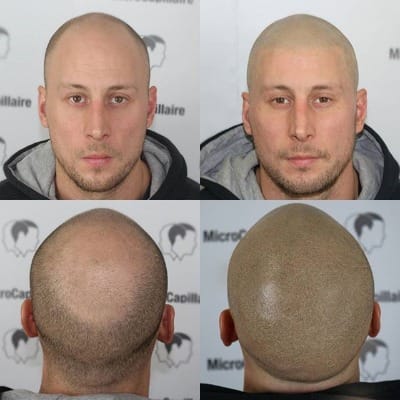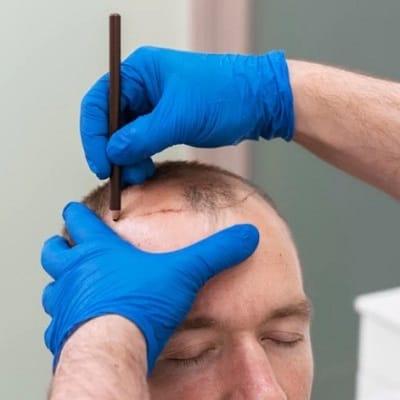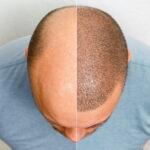
You are not the only one considering getting a hair transplant to replace your lost hair. Therefore, hair restoration provides the opportunity to have a fuller head of hair. However, two widely used hair transplantation techniques are follicle unit extraction (FUE) and follicular unit transplantation (FUT). Moreover, there are several important distinctions between the two forms of hair transplants, but both may help you get naturally thicker, fuller locks again. Further, the FUE follicular unit extraction and FUT follicular unit transplant procedures are the two technical variations in hair transplant surgery.
Additionally, the manner of harvesting or extracting the hair grafts is the sole variation between the two procedures. Further, the other phases, which include dissection, slitting, and implantation, are the same. Therefore, in this blog, you will read about different types of hair transplants to help you choose the best.
Different Types of Hair Transplants: FUE Vs FUT
There are two types of hair transplants.
FUE Hair Transplants
FUE hair transplantation is the extraction of individual follicular units from the scalp. By randomly removing the hair follicles, your doctor may collect hair from the donor region while causing less obvious thinning of the surrounding tissue. Follicular Unit Extraction (FUE) involves harvesting hair from the scalp using small circular incisions.
FUE hair transplants come in two varieties: robotic and manual.
A doctor performs FUE hair transplant manually through extracting individual hair follicles using portable equipment.
Robotic hair transplantation with FUE involves a medical professional guiding the ARTAS robot, providing unparalleled accuracy and precision in collecting donor grafts.
Benefits Of FUE Hair Transplants
- Minimally Invasive: FUE hair transplants need very small incisions, which reduce pain and scars.
- Tailored Outcomes: Extracting individual follicles guarantees a smooth and natural hairline.
- Quick Recovery: A speedier return to normal activities is possible due to the faster healing period compared to FUT.
- No Linear Scar: FUE creates no linear scar, giving you more style options and the ability to wear shorter hair.
- Less Pain and Discomfort: Less pain and discomfort after surgery, making the procedure more tolerable.
- Versatile Donor Site: Increases donor possibilities by enabling harvesting from different body parts.
- No Sutures Needed: FUE does not need sutures, which makes the process go more smoothly and easily.
- Appropriate for Brief Meetings: Perfect for limited transplant sessions or specific locations.
- Reduced Complication Risk: Compared to other hair restoration techniques, there is a reduced chance of problems.
- Adaptable to Facial Hair Transplants: FUE offers adaptability and is successful for beard and eyebrow transplants.
A FUT Hair Transplant
Follicular Unit Transplantation, known as the “strip method,” involves removing a long, thin slice of tissue from the scalp’s rear. The next step involves stereo-microscopic dissection to extract individual follicular units from the strip. Following follicle harvesting, the incision is closed, leaving a very thin linear scar in its wake.
Benefits of FUT Hair Transplant
- High Graft Yield: FUT is perfect for comprehensive hair restoration since it may produce more grafts in a single session.
- Cost-Effectiveness: In general, less expensive than FUE for patients who need more grafts.
- Single Donor Strip: This method minimizes the number of incisions by collecting a single donor strip.
- Appropriate for Severe Baldness: FUT works well in severe baldness and progressive hair loss.
- Uniform Graft Quality: The close harvesting of grafts guarantees uniformity in thickness and quality.
- Less Transaction: In contrast to some FUE methods, there is a lower chance of graft injury during extraction.
- Shorter Procedure Time: This method is often quicker than FUE when harvesting more grafts in a single session.
- Simpler Graft Dissection: The strip technique simplifies transplant preparation and graft dissection.
- Well-Suited for Tight Scalps: Patients with a tighter scalp, where FUE may be difficult, may benefit from FUT.
- Predictable Outcome: FUT offers a dependable and predictable result for substantial hair restoration.
Conclusion: Which Is the Best Hair Transplant Method, FUE or FUT?
These surgeries are great options for both men and women experiencing hair loss. Talk to your surgeon about which procedure is best for you while deciding between FUE Vs FUT
During the consultation process, it would be beneficial to discuss with your doctor your goals and objectives, the number of follicular units required to achieve the desired coverage, and the final design of your hairline. It will help you and your physician decide which hair transplantation is most appropriate.
You can consult with the most experienced and successful hair transplant surgeon, Dr Naveed Azhar, at Enfield Royal Clinic. He will suggest which hair transplant procedure will best fit your needs.







